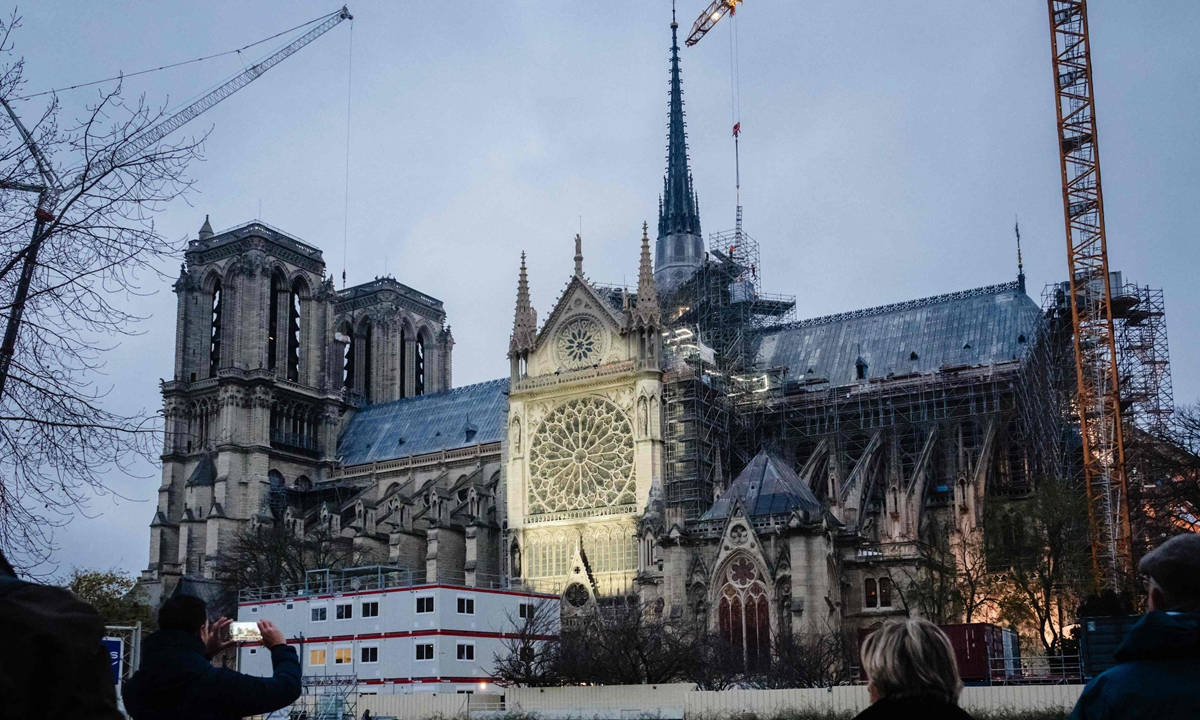
A pedestrian takes a picture of the Notre-Dame de Paris cathedral in Paris on December 4, 2024, before its reopening on December 7, 2024. Photo: VCG
The restored Notre-Dame de Paris cathedral officially reopened on Saturday with a grand inauguration ceremony after being devastated by a fire five years ago as China was the first country to participate in the restoration.
The ceremony began with a tribute film, honoring all those who have played a role in the rescue and restoration of Notre-Dame. "Thank You" was projected in multiple languages on the cathedral's iconic facade.
Following the catastrophic fire on April 15, 2019, China was the first country to sign an intergovernmental agreement with France for the restoration of the cathedral, enabling Chinese experts to contribute to the restoration project.
Chen Jiachang, an expert from the China Academy of Cultural Heritage, told the Global Times on Sunday that the restoration of Notre-Dame de Paris has again sparked collaboration between China and France, particularly in the preservation of wooden relics.
"Inspired by China's techniques used in the preservation of fire-damaged wooden structures like those at the Terracotta Warriors site, France has sought advice on stabilizing and showcasing damaged components as cultural artifacts," Chen noted.
In February of 2024, Emperor Qinshihuang's Mausoleum Site Museum in Northwest China's Shaanxi Province sent specialists to Paris to assist with the conservation and restoration of Notre-Dame. China and France have jointly initiated scientific research on the preservation of wooden relics and earthen sites from both Notre-Dame and the Mausoleum of Emperor Qinshihuang, marking the first instance of international collaboration on studying charred wood samples from Notre-Dame.
Zhou Ping, a deputy director of the Chinese museum, told Phoenix TV that Chinese experts were the first non-French professional team to ascend the spire of Notre-Dame.
In February 2023, Zhou was appointed to participate in the cathedral's restoration. During the restoration, she contributed China's expertise in cultural relic preservation, including marble cleaning, research on charred wood, and conservation techniques for murals, metals and related artifacts.
Zhou noted that both Notre-Dame and the Terracotta Army of Emperor Qinshihuang extensively used wooden materials, both of which have charred remains. By studying these burned wood or charcoal relics, the Chinese and French teams advanced research on fire-resistant materials, aiming to extend the time cultural relics can withstand fire and enhance rescue efforts.
According to CCTV News, the five-year restoration involved more than 2,000 craftsmen and experts, with a total cost of nearly 700 million euros.




